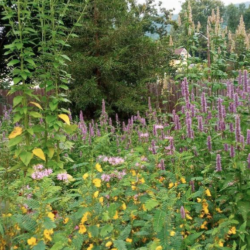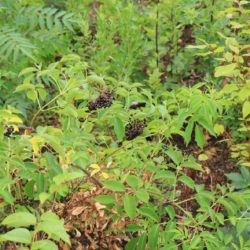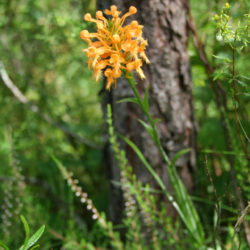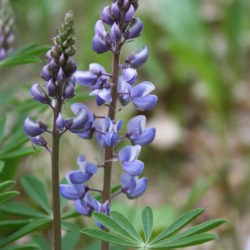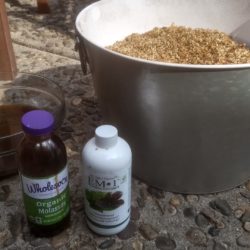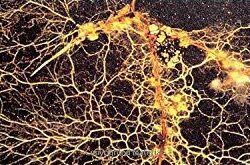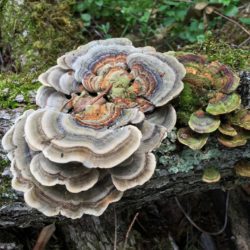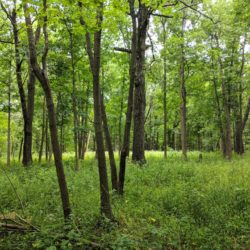Tips, Tricks, and Techniques Written by: ELA Staff Zach McElgunn and Amy Nyman, Horticulture Outreach Manager, New England Botanic Garden at Tower Hill This month, ELA takes some quick tips,…
Developing Healthy Landscapes
An unhealthy environment should not be the price of a beautiful landscape. Inappropriate plant choices and inadequate soil preparation can lead to a reliance on excessive use of water and on toxic chemicals to resolve problems. Ecological landscaping encourages practices that promote a healthy environment through conservation of resources, respect for biodiversity, and ecologically-sound techniques.
Myawaki Forest in Cambridge, Mas
MYAWAKI FOREST IN CAMBRIDGE, MASS. Written by: Leslie Duthie It is a beautiful 50′ circle of green in the dry park. Despite the severe drought, the trees look good and…
Current Climate
First Step to Maintain Biodiversity? Acknowledge Indigenous Knowledge as Science Written by: ELA Director, Mads McELgunn, MA Since reading Robin Wall Kimmerer’s 2013 book, Braiding Sweetgrass, I’ve been patiently waiting…
Restoring a Pitch Pine-Oak Upland Forest at Norcross Wildlife Sanctuary
Restoring a Pitch Pine-Oak Upland Forest at Norcross Wildlife Sanctuary Written by: Dan Wilder, Director of Wildlife Ecology, Norcross Wildlife Foundation Norcross Wildlife Foundation is located in south-central Massachusetts and…
The Joy of Bokashi Composting
By Boris Kerzner
About five years ago, while living in a small house with a small backyard, I was fortunate to be introduced to bokashi composting. Whereas standard compost piles rely on the presence of oxygen for decomposition to occur, the bokashi method is a two-step process in which the first step occurs in the absence of oxygen. This composting method takes less space and less tending than a traditional compost pile.
Healthy Plant Metabolism
By Michael Phillips
Healthy plant metabolism begins with a molecule of water, a breath of carbon, and light energy from our nearest star. The tangible science behind all this unlocks the righteous way to farm and garden, give honor to trees, and plain do right by this earth. Nothing has ever excited me more.
Mycological Strategies for Surviving
By Paul Stamets
Today, we only have 10-15% of the forest debris that nature has needed to build the food webs for sustainable ecosystems. Widespread deforestation, factory farming, population expansion, industrialization, and concomitant pollution are ongoing threats imperiling our ecosystems and the foundation of our food webs at a time when unprecedented waves of humans walk the Earth needing water, sustenance and shelter. What do I recommend?
Landscaping in partnership with native ecosystems is good for the planet. It’s good for us too.
By Lillian Harris
We know that rewilding is good for nature. But is that the only reason we should get on board with rewilding? I’d like to share some reasons why rewilding is not just good for nature, it is also good for us. Specifically, for our mental health.
Ways to Improve Your Nutrition and Health During the Offseason
By Samantha McCarthy
Fall is now upon us. While physical activity is still a part of the daily job, it may not be as intense or strenuous as spring days. Eventually, winter will arrive again, and activity levels will drop significantly. It is now an excellent time to start changing your eating habits to reflect your activity levels.
The Needs Assessment of Los Angeles Soils: Current Status, Community Needs, and Future Directions
By Yujuan Chen, Ph.D.
Soil is the brown infrastructure for Los Angeles. It has great potential to mitigate current and future climate impacts by sequestering carbon, improving water supply and water quality, supporting plant growth, enhancing food production, and maintaining healthy communities. This study aims to understand the current status of LA soils, identify soil issues, and work with partners to provide a framework to move forward.
Can the Soil Seed Bank Save Us?
By Nathan Lamb
Imagine two woodlands. Both have deciduous, fire-adapted trees overhead. One has widely spaced trees, and sunlight reaches a diverse community of grasses, sedges, and forbs. The other has a dense thicket of invasive shrubs that shades out all but the earliest spring ephemerals. Will removing the invasive shrubs and exposing the bare soil trigger a profusion of native plants, restoring the diverse community that lived there hundreds of years ago?
Proper Nutrition for Increased Activity Levels
By Samantha McCarthy
In landscape and gardening design, spring means a change from a more sedentary winter lifestyle to a sudden increase in physical activity. This quick transition can be a challenge for the body, so optimizing your nutrition throughout the Spring and Summer can help you feel better, increase energy levels, and prevent inflammation and pain in the joints.

